‘Wallpaper: Conjuring metaphysical moods and deep-sea landscapes’ | Cape Town, South Africa
South African artist, Caitlin Mkhasibe discusses her explorations into interdependent ecologies and wallpaper design as a platform for mural-scale artistic expression and collaboration.
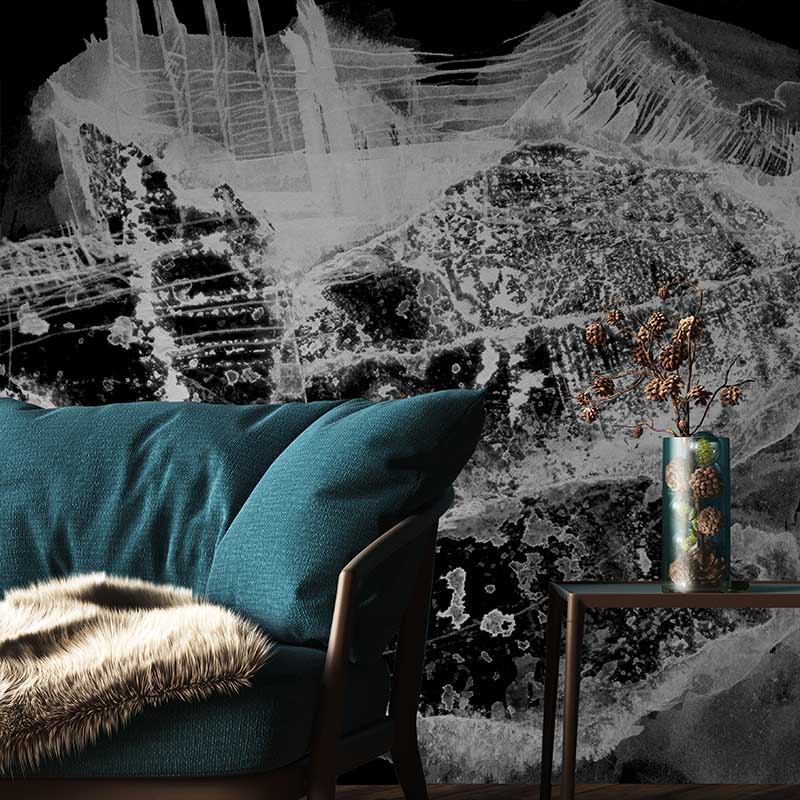
I've wanted my art on walls since I was introduced to and inspired by the work of street artists, ROA and BLU, in my early teens. My first large scale project was done with a high school friend where we converted the walls of each cubicle (inside and out) in our school's boys' bathroom into chapters of a story. We did the project with the permission and half of the funding from the school. We raised the other half by hosting a live gig of our friends' bands, including the one I was in at the time. Since then, I secretly and clumsily painted a few public walls and did experiments on abandoned ruins here and there over the years. It has been interesting to come across people's posts online of selfies in front of my work, where they did not know who the artist was. Something made secretly under torch light and whispers was celebrated in the blazing sun years later. In one of the December holidays while in university, with permission from my parents, I adorned one wall in my bedroom with layers of old dictionary paper and paint. For my dream home, I'd also been eyeing watercolour-styled wallpaper designs on Pinterest. That further solidified wanting to have my abstract, textured art on my own walls. Renting since graduation never allowed me to explore this further, without worrying about having to paint over it well enough to get my deposit back whenever I'd choose to move ... and I have moved every year since graduation in 2015.
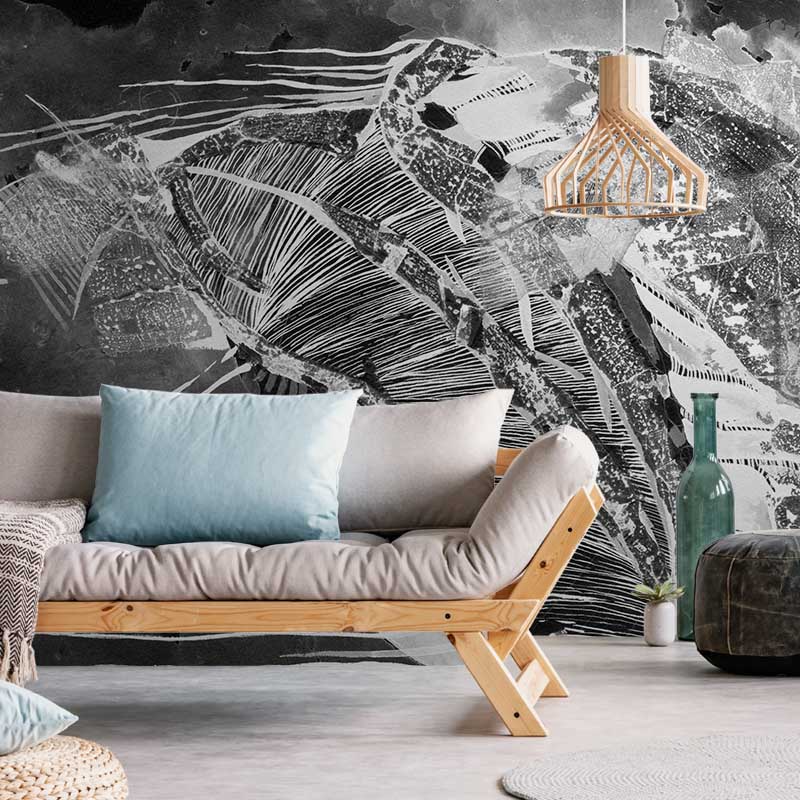
I came across Robin Sprong Wallpapers (RSW) online on two different art research occasions and the company's work lingered in my mind for a while. I saw that they collaborate with artists and mustered the courage to reach out to them via email. I received a lovely response from the artist liaison and graphic designer, Nadia du Plessis, who also is an amazing artist at her own studio, Bvbblgegvm Illustrations. Luckily, we had met each other and exhibited together at Open Book: Comics Fest earlier in 2019 in Cape Town, so she was already familiar with my art. She introduced my work to Robin, who liked it and the collaborative process began from there.
I was called in to meet everyone at RSW in October 2019 and Nadia gave me a tour of the office and the impressive printers. Nadia was very welcoming, supportive and patient to answer my many questions. I got to feel the different kinds of paper that they use and was able to see examples of wallpaper that they had done. They had an internal meeting prior to my meeting with Nadia and I was informed that there was interest in two of my pre-existing works that I did in 2015, Barnacles and Ship Sonar. I was asked to expand on these to create a series of works for the team to choose from to form a collection. I reconstructed these older works from multiple scans for a higher resolution. Because those final artworks were manipulated digitally, I still had the original, separate elements on paper to work with that used soy wax, ink and pen on wax and 160gsm paper.
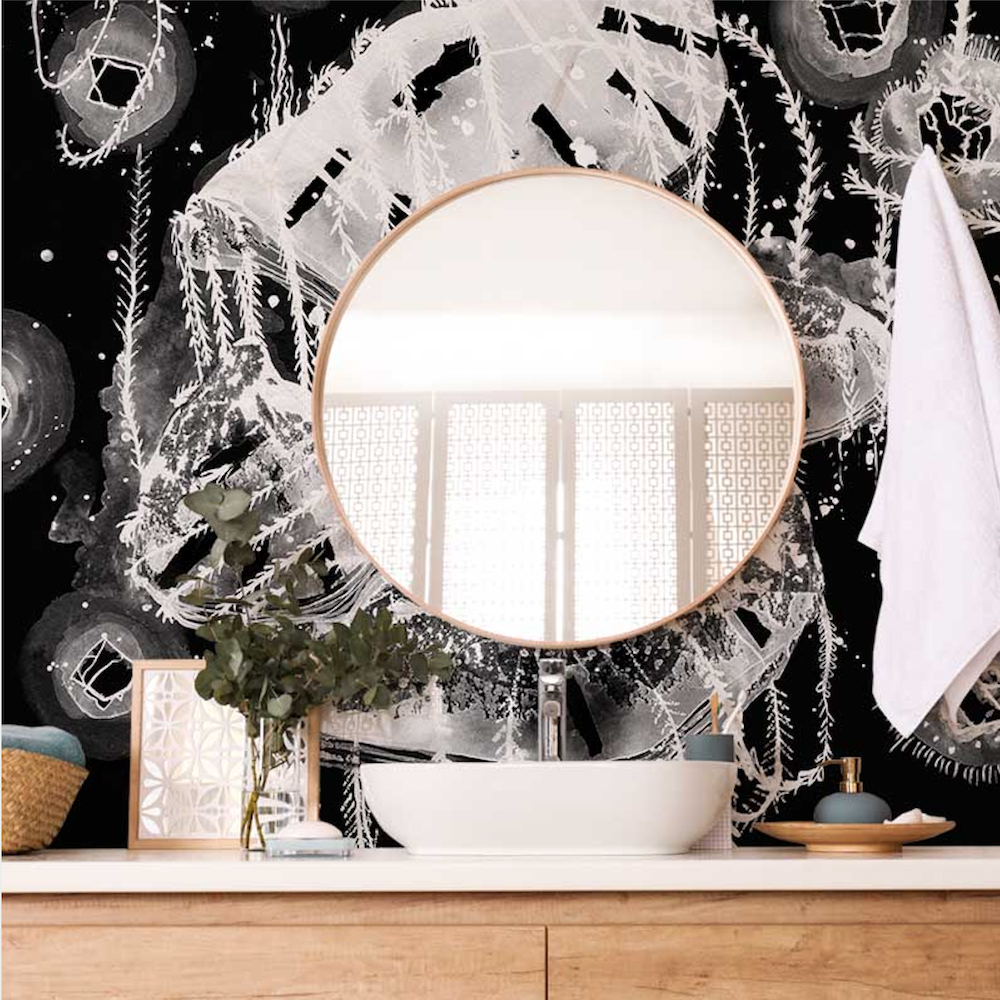
I created newer artworks within a similar theme and these are called: Jellyfish Planet;
Underwater Plateaus, Gems, Reef and Underwater Landscape. Just like Barnacles and Ship Sonar, the newer pieces referenced sonographs and deep-sea creatures as they discussed human-made noise pollution affecting echolocation between marine mammals. I like black and white images of sunken ships and documentaries on deep sea exploration, so I kept these in mind while working.
To add some variety and colour to the collection, I used homemade vegetable and fruit inks to create the two pieces, Atoms & Vegetation and River, Rocks & Vegetation. I've been exploring this medium since learning a few years ago that certain paints don't have animal friendly ingredients. Overtime, I researched brands that use substitutes, but I took a liking to the unusual medium and mixed it with bought acrylic paints and ink. The imagery for the two artworks were based on my visits to the Newlands and Cecilia forests in Cape Town. Before South Africa's Covid-19 lockdown, I spent a lot of time outdoors, when I wasn't working on art or with the band. I often took pictures as references, so I used some of those combined with memories of the visual inspiration I get from the natural environment.
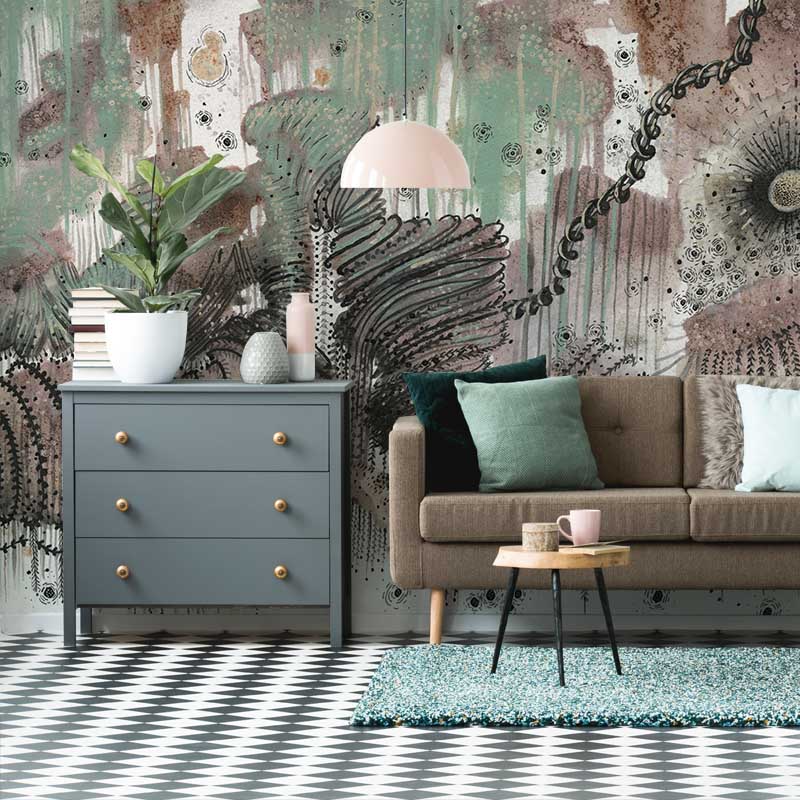
From concept to the finished artworks, it took about a month to produce an array of ideas for the first round of choices for the RSW team to review. I first worked on miniatures before upscaling. After a review from the team, I continued to work on their suggestions and created final, large pieces. I then scanned them at a high resolution and digitally manipulated the monochrome pieces.
The RSW graphic design team also create their own designs exclusively for the company, so I was given clear guidance on their process. Since I wasn't creating a recurring pattern but rather a large mural, I had a lot of freedom to play with abstract texture and form and that was exciting. After feedback on the stronger artworks of my series, the team double checked the standard of the work and prepared the final files for potential print jobs. Methods for the wallpaper design process and how I usually work artistically are fairly similar, however, there was a team to give feedback. From that I learned to zoom out from my work process as I tend to get detail orientated. The extra eyes reviewing the work helped me to tweak the works and polish them off.
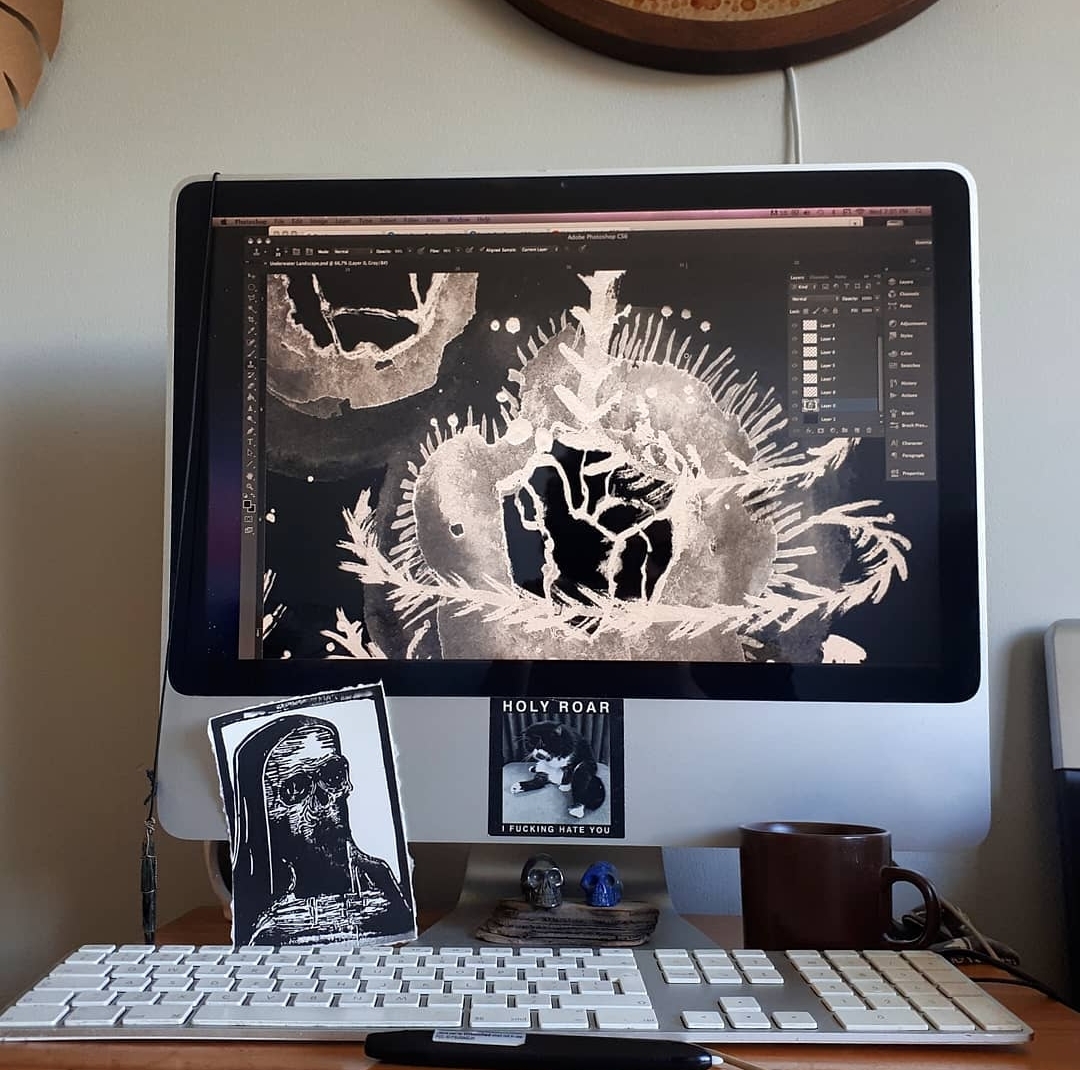
The only challenge in this process was not having access to my own high-resolution scanner and there are few places in Cape Town that offer scans over 600dpi. The cost per scan is also puzzling, but it was very rewarding when I saw 1000dpi scans of my works for the first time on my screen. It felt like I was swimming in my artworks - something I've always wished to emulate through the close-up, detailed pictures that I take of the textures in my work. The scans picked up on the paper fibre, brushstroke layers and intricate linework, which was amazing. It also picked up scanner bed dust and other artifacts, so I had to work back and forth with the team to polish the photoshop files. I didn't realize my screen calibration was off and that made it hard to see some of my visible efforts to correct the files, so I had to borrow another computer and digital pen where I could see everything much better.
This collaboration with RSW has inspired me to work at an immersive scale in future. Art school always pushed for museum scale exhibitions from the students and I had tried this with projection in my final year. I have been focusing on affordable art at a smaller scale since then, but now I think I will continue to research and plan something on a large scale when the opportunity arises. The collaboration with RSW has definitely had an impact on myself and clients.
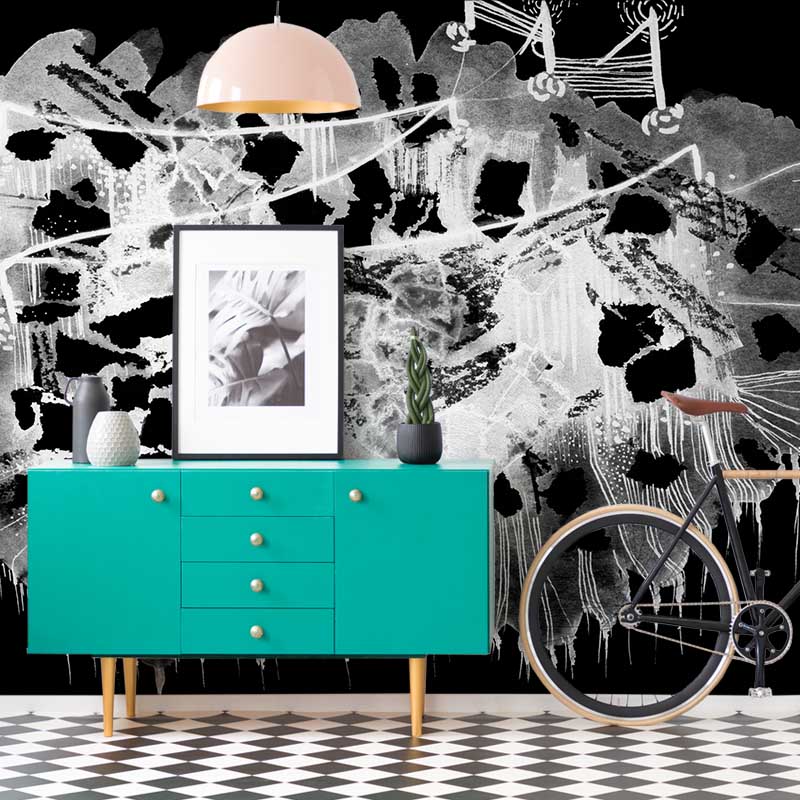
I have been approached for collaborations since sharing the collection online, I've had friends and family reach out, and I do feel more people take my work seriously. I acknowledge that it took a lot of communication between myself and a team to get to the final product that we are very proud of. The professionalism of RSW in the realms of graphic design, interior design, photography and wallpaper set vision and expertise, gave an elevated tone to my work. It has carried me forward and I couldn't be more grateful for their time and belief in me.
It is also phenomenal to know that through RSW, my art has a global reach outside of South Africa (Singapore, Dubai, United Kingdom, Germany, Netherlands, France, Italy, Portugal, USA, Australia, and New Zealand) and it is refreshing to work with a company that has an eco-conscious attitude.
When I look back, I realize that since 2012 I have had a Pinterest board focusing on interior design and even recall that as a teen, I modge-podged artistic elements from my mom's old home decor magazines onto the furniture, drawers and walls of my bedroom (thanks again, mom), so I would love to continue to pursue more of this kind of work when the opportunities arise.
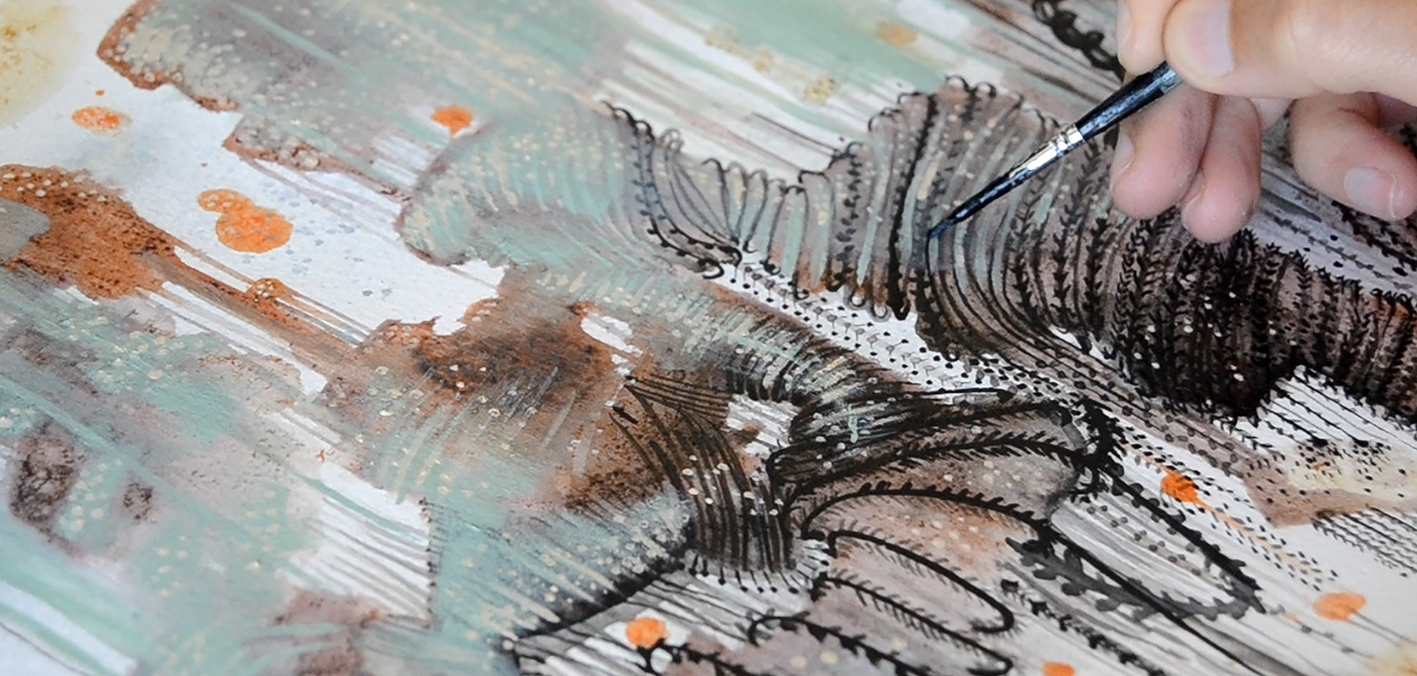
I'm re-approaching how I present my work publicly overall by zooming out more during the process of creating, as I mentioned before. I'm also focusing on trying to put weight on how I present my final artworks so that it tells the story of each piece more precisely. It will take time, careful planning and consultation from artist friends but I am optimistic about it. I am still new to wallpaper design and each artist's work and approach is different. I feel I can only speak about my experience if it helps others who are curious about exploring wallpaper design. I found it was good to ask as many questions as needed to clarify the process. I listened to and worked with their suggestions, delivered when they needed work and I trusted that my art had been granted this platform for a reason.
More picture of Caitlin's process in PDF below:
To see the Robin Sprong Website with Caitlin's wallpaper designs, click here!
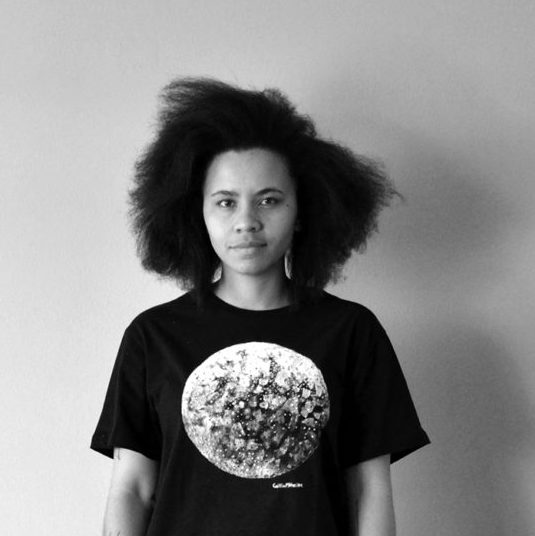
ABOUT THE ARTIST
Caitlin Mkhasibe graduated with a BFA at the Michaelis School of Fine Art in 2015. She is a Cape Town based artist and plays drums & discordant tones in the audio-visual ensemble, Morning Pages. When she isn’t illustrating on paper or up-cycling clothes into wearable art, she also does handpoke tattoos.
The materials she uses to create art are animal friendly and she utilizes abstract mark-making to render organic textures from nature to discuss political ecology, metaphysical moods and outer space. Caitlin explores how human made sounds affect echolocation between marine life. This is done through interpretations of spectrogram / sonographic textures amalgamated with illustrated parts of ships and creatures of the deep to form a coalescence of beings in and fragments of underwater scenes. Another eclectic element of her work is the use of home-made vegetable inks to illustrate the interdependence between natural ecosystems.